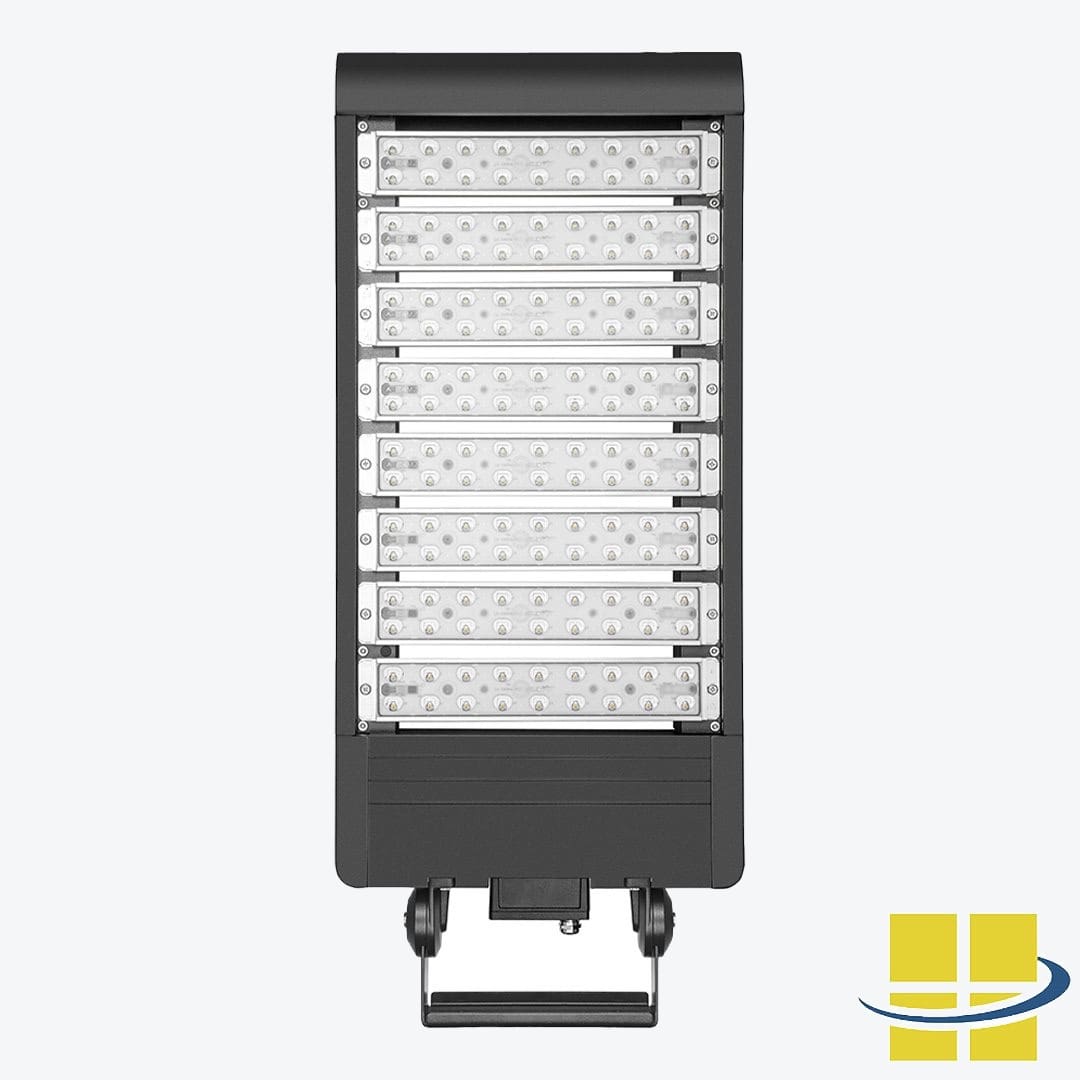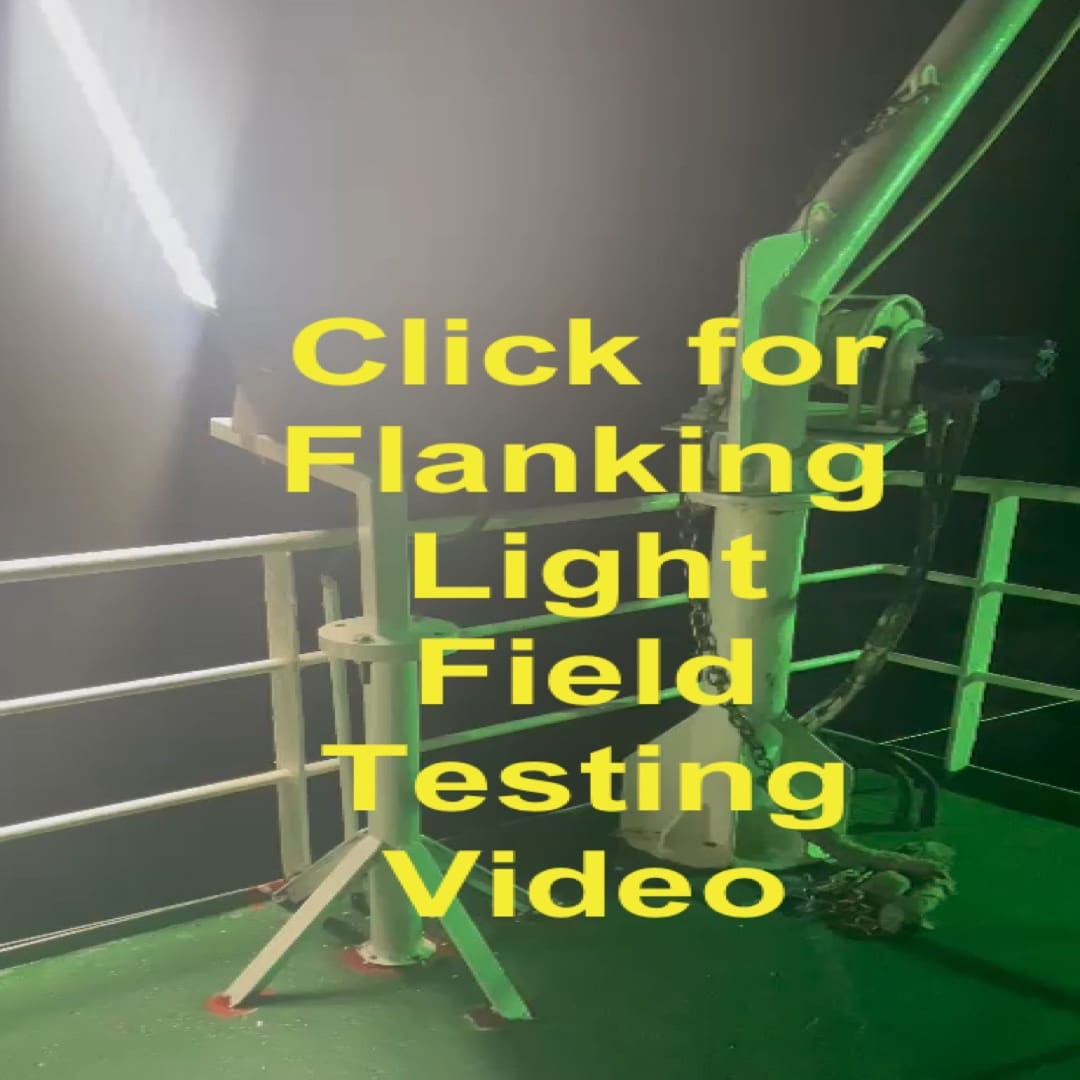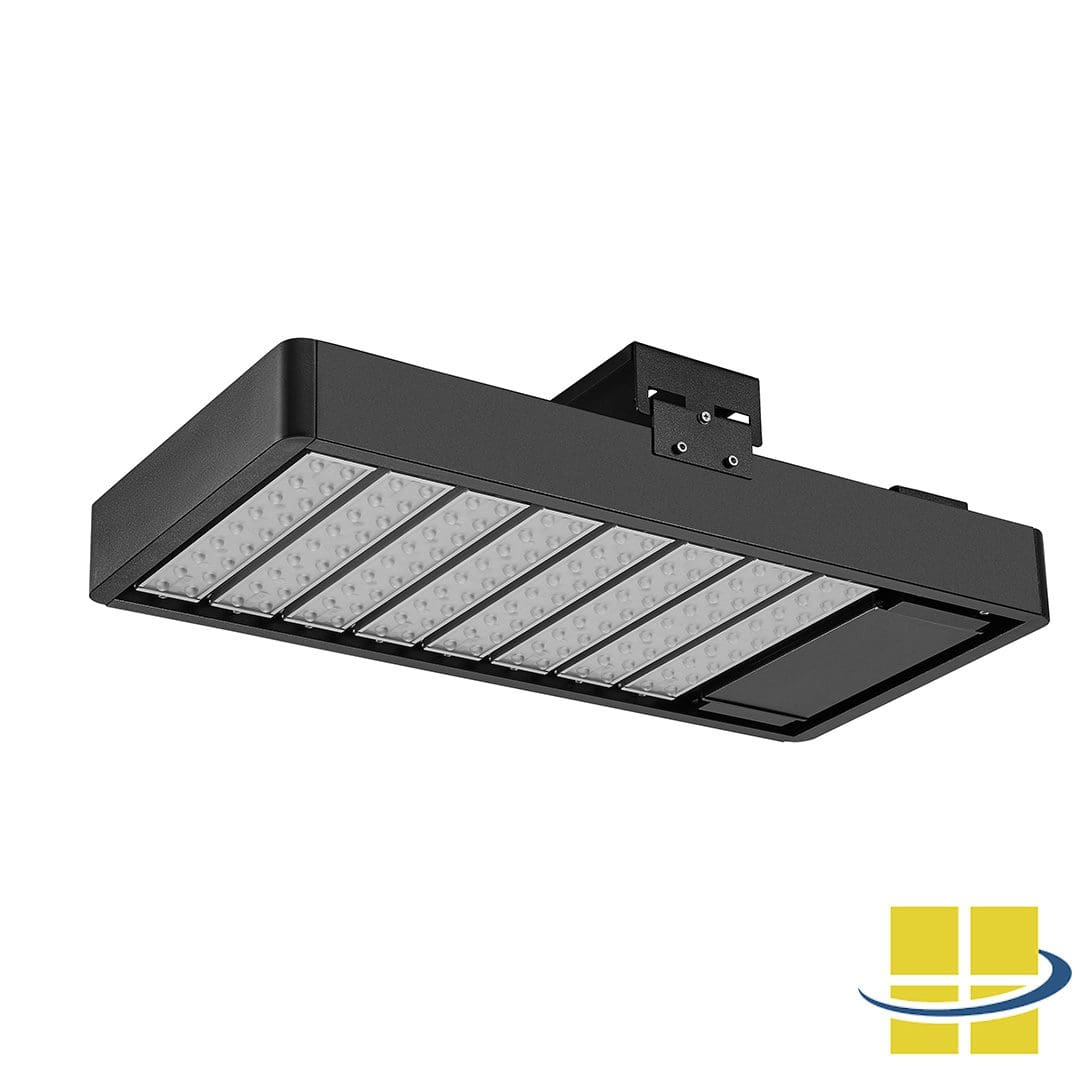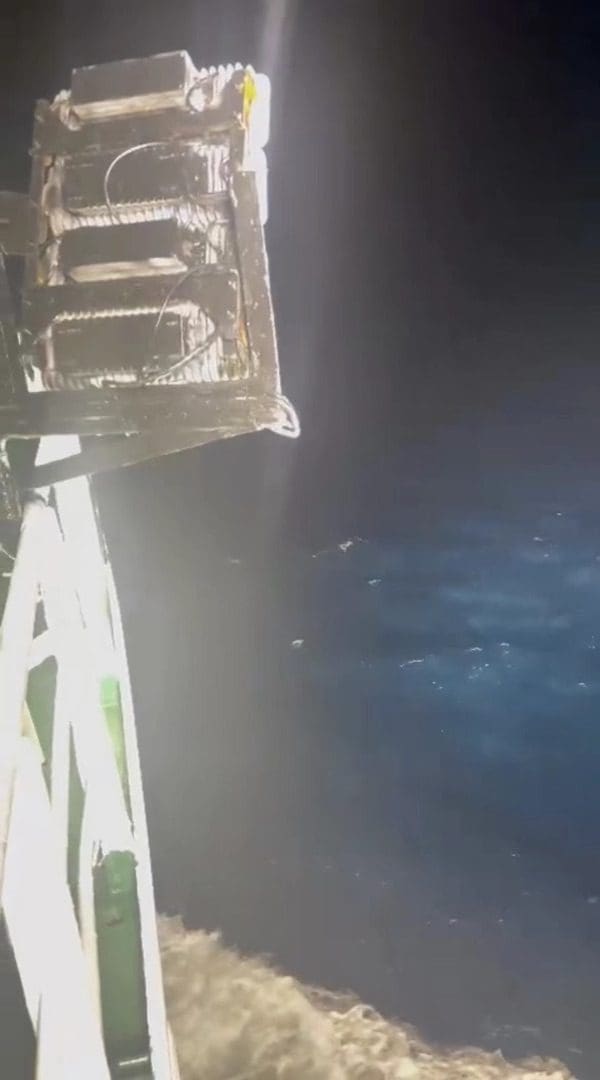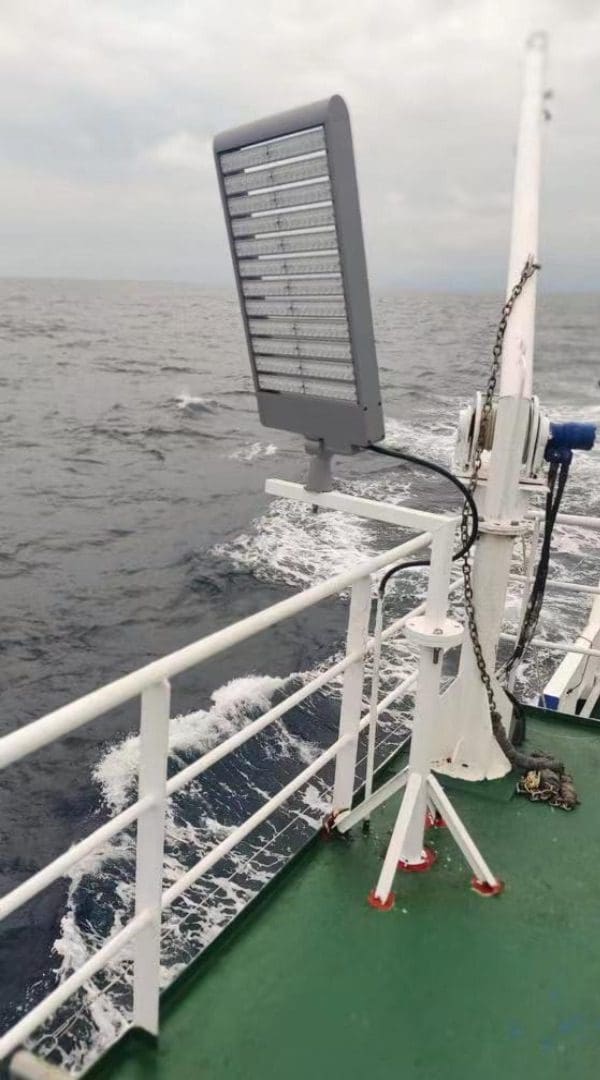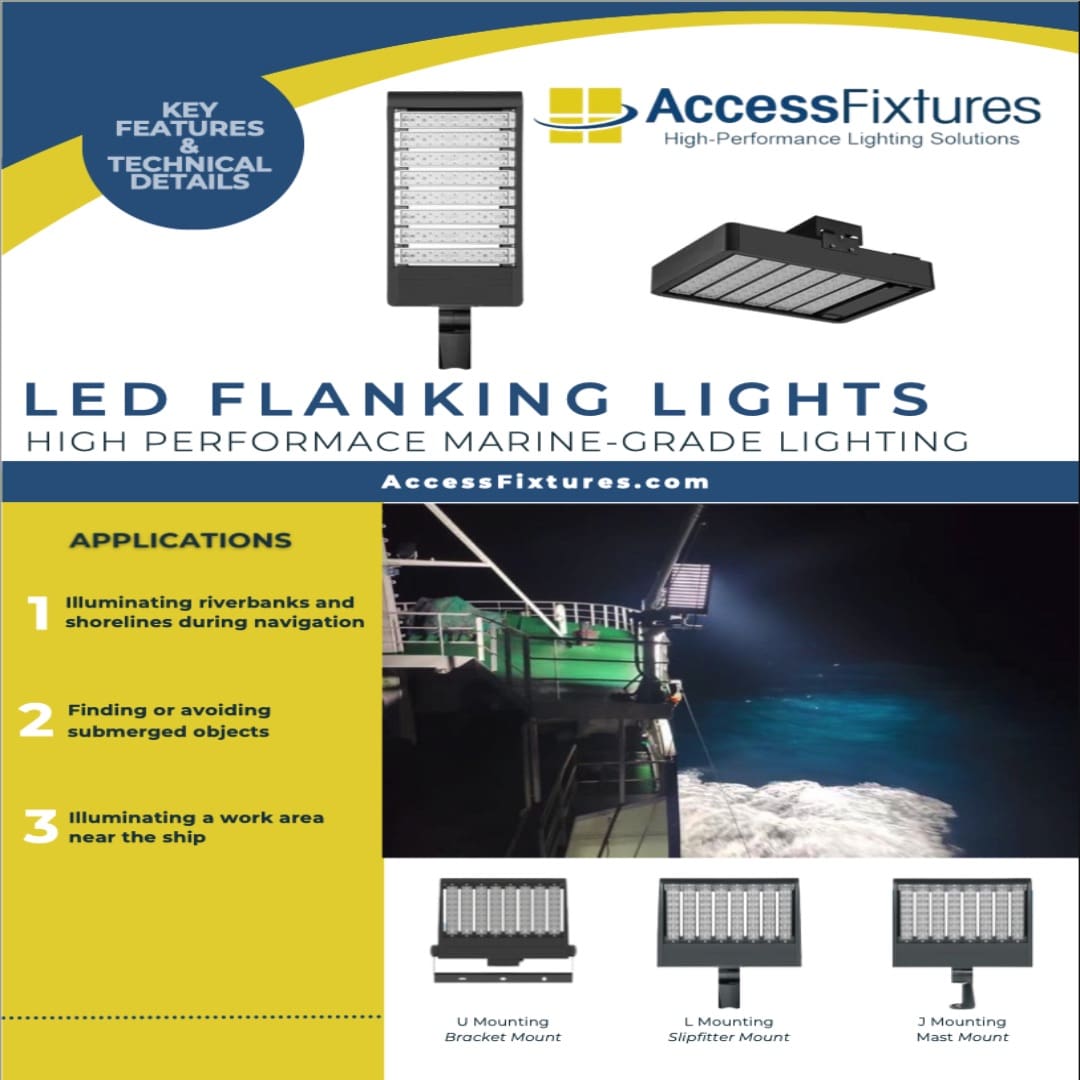
Flanking Light – High Performance LED Matine Lighting
LED flanking lights offer significant advantages over conventional fixtures, particularly in marine settings. These LED lighting fixtures are manufactured for ships and are used for focused and directed illumination such as lighting distant river banks, navigating narrow areas like canals, or illuminating a work area near the ship. Examples of use include illuminating river banks and shorelines during navigations, finding or avoiding submerged objects, and overall enhancing safety. LED flanking lights are also used to illuminate work areas on the ship or by the ship to provide sufficient lighting and safe work areas. Wattage and beam spread should be determined by the distance of the object(s) to be navigated around or the depth, width, and distance of the work area being illuminated.
Key Takeaways
-
-
Marine-Specific Design: LED flanking lights provide focused illumination for marine tasks such as navigating waterways and lighting work areas. They are adjustable for various distances and conditions.
-
Durability: These lights must be corrosion-resistant, waterproof (IP66+), and impact-resistant (IK10). They endure harsh maritime conditions, vibrations, and temperature extremes, ensuring reliable performance.
-
Longevity and Performance: High-quality flanking lights, like those from Access Fixtures, offer long lifespans (L70 @ 200,000 hours) and robust features, including anti-corrosion finishes, advanced optics, and versatile mounting options.
-
What are Marine LED Flanking Lights?
Marine LED flanking lights are specialized lighting fixtures designed specifically for use in marine environments, such as on ships and boats. These lights are engineered to provide focused and directed illumination, making them ideal for tasks like navigating through narrow waterways, illuminating distant riverbanks, and enhancing overall safety and efficiency in various marine applications. Built to withstand the harsh conditions of marine environments, these lights are resistant to corrosion, water damage, and extreme temperatures, ensuring reliable performance even in the most challenging conditions.
Key Benefits and Features
Marine LED flanking lights offer several key benefits and features that make them an essential component of any marine lighting system:
- Highly Defined Beam Making: These lights are designed to produce a highly defined beam, making it easier to illuminate specific areas or objects at an extreme distance, ensuring precise and effective lighting.
- Heavy Gauged Metal Material: Constructed from heavy gauged metal material, these lights provide exceptional durability and resistance to corrosion, ensuring long-lasting performance in harsh marine environments.
- Modular Manufacturing Process: The modular manufacturing process ensures that each component of the marine LED flanking lights is carefully crafted to meet the highest standards of quality and performance.
- Corrosion Protection: Featuring materials and coatings that resist the corrosive effects of saltwater and other marine elements, these lights are designed with corrosion protection in mind.
- High Efficiency Driver: Equipped with high efficiency drivers, these lights minimize energy consumption while maximizing light output, providing efficient and effective illumination.
- Waterproof Quick Disconnect: Many marine LED flanking lights feature waterproof quick disconnects, making it easy to install and maintain the lights without compromising their waterproof integrity.
- Expressed Purpose: Designed with a specific purpose in mind, these lights provide directed illumination that enhances safety and efficiency in marine environments.
Applications and Uses of Marine LED Flanking Lights
Marine LED flanking lights have a wide range of applications and uses in various marine environments. Some of the most common uses include:
- Navigation: These lights are used to illuminate riverbanks, shorelines, and other obstacles, making it easier to navigate through narrow waterways safely.
- Safety: By enhancing visibility in marine environments, these lights help reduce the risk of accidents and injuries, contributing to overall safety.
- Work Area Lighting: Marine LED flanking lights provide sufficient lighting for tasks such as maintenance, repair, and cargo handling on ships and boats, ensuring safe and efficient operations.
- Docking and Mooring: These lights are used to illuminate docking and mooring areas, making it easier to maneuver vessels in and out of these areas, especially in low-light conditions.
Durability is a Basic Requirement for Marine LED Flanking Lights
LED flanking lights must be manufactured for extreme durability, as maritime environments are harsh. Testing results must be checked to make sure that the light meets a specific standard proving that it is a flanking light and not just a nice LED light. Compared to most conventional fixtures, marine LED flanking lights offer superior performance and lower maintenance costs due to their enhanced durability and corrosion resistance.
Corrosion-resistant: Materials must be corrosion-resistant and treated for resilience against saltwater, rain, and severe weather conditions. Meeting testing such as ASTM B117-2018 ensures the flanking light can withstand a 5000-hour salt spray test. The importance of corrosion protection making the lights more durable and stronger cannot be overstated, as it significantly enhances the longevity and reliability of the fixtures.
Vibration: Ships have vibration and constant movement. A 3G vibration test to meet ANSI C136.31-2018 means the flanking light can handle vibration.
Waterproof: Flanking lights will be exposed to wet locations and possibly water coming up and over the flanking light. To survive flanking lights must be waterproof. All flanking lights should be tested to meet IP66 or higher water resistance.
Impact Resistant: Sooner or later a flanking light will be hit by something. If there is any glass, it will break compromising the LEDs and the interior connections. A flanking light should never have any glass and must be built to meet IK10 impact resistance.
Operating Temperature: It’s wet out there It can be very cold too. Even if it is cold out, flanking lights need to work. Make sure the flanking light meets your temperature requirements.
Surge Protection: Power generators on ships are known for power surges and voltage variances. LED drivers in flanking lights need to have at least 10KA surge protection and be able to handle variations in the voltage being provided.
LED Life: Over time, while using the same amount of electricity, LEDs produce less life. While flanking lights will break someday, accepting a short LED life is not a good start. Check the L70 rating. L70 @ 50,000 hours means the LEDs will emit 70% of the initial light after 50,000 hours, while L70 @ 200,000 hours means the LEDs will emit 70% of the initial light after 200,000 hours.
Field Testing LED Flanking Light
In 2022, two flanking lights were installed on a commercial fishing vessel that was about to embark on an extensive journey from Spain across the Atlantic Ocean to Panama, and then continuing the voyage in the Pacific Ocean. Part of the function of the voyage was to test two different flanking lights, that could be used to illuminate an area on the side of the ship when fishing. One flanking light was from Access Fixtures and the light was from another company.
The Access Fixtures’ flanking light, while officially rated as IP66 to provide a safety margin, is manufactured with the IP68 air tightness tested at 30KPa with test points at each light module, the supporting frame, and the junction box. The Access Fixtures flanking light is also manufactured with a superior Akzo Nobel powder coat anti-corrosion finish tested to exceed over 5000m hours of salty spray. It is structured to pass a 3G vibration test and an IK10 impact test too.
The Access Fixtures flanking light had no issues withstanding the Atlantic and Pacific oceans, demonstrating resilience throughout the 8-month real-life test environment. The other manufacturer’s light fixture was rusting away.
Access Fixtures LED Flanking Lights Meet and Exceed Requirements
Corrosion-resistant: Meets ASTM B117-2018 5000-hour salt spray test.
Vibration: Meets ANSI C136.31-2018 3G vibration
Waterproof: Built to meet IP68 standards. Rated IP66.
Impact Resistant: No glass. IK10 impact resistance. If one light module gets destroyed or hit by a bullet, the other light modules remain on.
Operating Temperature: -40°C to +50°C
Surge Protection: 10KA surge protection standard. Operates with a voltage range of 100-277VAC.
LED Life: L70 @ 200,000 hours
Optics: Large choice of optics to meet specific illumination requirements
Wattage: 10w to 2400w provides the level of illumination required for any application
Mounts: Every type of mount to provide secure and/or directed illumination
Download The LED Flanking Lights Product Information Catalog
Marine LED Flanking Light Summary
Compromising on quality and durability will only cause failure when performance counts. Thoroughly check the specifications of the flank lighting. Make sure the optics and beam spread are correct for your application. If you have questions, speak with an Access Fixtures Lighting Specialist or submit your question(s) using the links below.
LED Flanking Lights Frequently Asked Questions (FAQs)
You have questions about LED Flanking Lights. We have answers. If you have a question that isn’t answered below, contact an Access Fixtures lighting specialist at (800) 468-9925 or click here.
What are LED flanking lights used for?
LED flanking lights are used for focused and directed illumination in marine settings, particularly on ships. They help in lighting distant river banks, navigating narrow areas like canals, and illuminating work areas near the ship to enhance safety and efficiency.
What makes marine LED flanking lights different from regular LED lights?
Marine LED flanking lights are designed for extreme durability to withstand harsh maritime environments, offering superior performance and lower maintenance costs compared to conventional fixtures. They are corrosion-resistant, waterproof, impact-resistant, and vibration-resistant. They also feature specific standards for temperature range and surge protection to ensure reliable performance.
How can I ensure my LED flanking lights are corrosion-resistant?
To ensure corrosion resistance, look for lights that meet the ASTM B117-2018 standard, which requires a 5000-hour salt spray test. This ensures the lights can withstand prolonged exposure to saltwater, rain, and severe weather conditions.
Why is vibration resistance important for LED flanking lights on ships?
Ships experience constant movement and vibration. LED flanking lights need to withstand these conditions to maintain functionality. Lights meeting the ANSI C136.31-2018 3G vibration test are designed to handle the vibrations commonly encountered on ships.
What waterproof standards should marine LED flanking lights meet?
Marine LED flanking lights should meet at least IP66 standards for water resistance. Higher standards like IP68 provide additional protection, ensuring the lights can handle wet locations and water exposure from waves and spray.
What does impact resistance mean for LED flanking lights?
Impact resistance ensures the lights can withstand physical impacts without compromising the LEDs and interior connections. Look for lights that meet IK10 impact resistance and have no glass components to prevent breakage.
How important is the operating temperature range for marine LED flanking lights?
Operating temperature range is crucial as marine environments can be very cold or hot. Ensure the lights meet your specific temperature requirements, typically between -40°C to +50°C.
Why is surge protection necessary for LED flanking lights on ships?
Ships often experience power surges and voltage variances due to power generators. LED flanking lights need at least 10KA surge protection and should handle voltage ranges from 100-277VAC to ensure reliable operation.
What is the significance of LED life ratings like L70?
LED life ratings such as L70 indicate the longevity of the light’s brightness. An L70 rating at 50,000 hours means the LEDs will emit 70% of their initial light after 50,000 hours of use. Higher ratings like L70 at 200,000 hours indicate longer-lasting performance.
Can I choose different optics, wattages, and a highly defined beam for my LED flanking lights?
Yes, LED flanking lights have various optics and wattages to meet specific illumination needs. Options range from 10w to 2400w, allowing you to select the appropriate level of illumination for your application.
How do I ensure the proper installation of LED flanking lights?
LED flanking lights should be mounted securely to provide directed illumination. Access Fixtures offers various mounting options to ensure the lights are installed correctly for optimal performance.
Where can I find more information about LED flanking lights?
Download the LED Flanking Lights Product Information Catalog or speak with an Access Fixtures Lighting Specialist for more details. You can also submit your questions using the provided contact links.
Troubleshooting Marine LED Flanking Lights
Troubleshooting marine LED flanking lights requires a systematic approach to identify and resolve any issues that may arise. Here are some common problems and solutions:
-
Light Not Turning On: Check the power source and ensure that the light is properly connected. Also, inspect the fuse or circuit breaker to ensure it has not tripped.
-
Dim or Flickering Light: Examine the LED driver to ensure it is functioning properly. Additionally, check the wiring and connections to ensure they are secure and undamaged.
-
Water Ingress: Inspect the waterproof seals to ensure they are intact. Also, verify that the mounting hardware is secure and not loose, preventing water from entering the fixture.
-
Corrosion: Check the light’s corrosion protection to ensure it is intact. Also, assess the surrounding environment to ensure it is not excessively corrosive.
By following these troubleshooting steps, you can quickly identify and resolve any issues with your marine LED flanking lights, minimizing downtime and replacement and maintenance costs.

